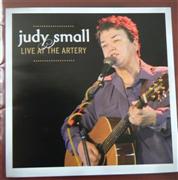Inside Acoustic Music: Recording a Live CD - Pt 1
The first of a four part conversation with Judy Small.
Posted Monday, August 11, 2008
In an intimate gallery/performance space, on a narrow Melbourne backstreet, over two consecutive nights of a summer that was to be extremely hot, an Australian singer/songwriter finally recorded her first live album. This four part article tells the story of the making of Judy Small: Live at The Artery.
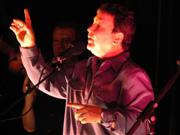
JUDY SMALL is an Australian singer/songwriter, who also works as a lawyer specialising in family law.
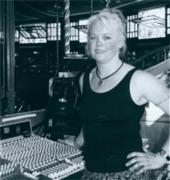
SIIRI METSAR has been twiddling knobs in recording studios and on live mixing consoles for nearly two decades, during which time she has continued to build a strong reputation as Australia’s only specialist audio engineer/producer in folk, world and acoustic music.
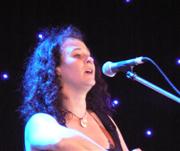
RUTH HAZLETON has been performing in touring acts for over a decade. She has dabbled in a variety of musical genres including Appalachian old-timey, Klezmer and Anglo-Celtic roots music.
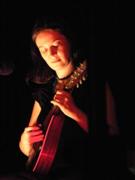
KATE BURKE is a multi-instrumentalist, vocalist and songwriter, who performs traditional folk music (Kate Burke & Ruth Hazleton), Irish music (Cooking for Brides, Trouble in the Kitchen) and much more. Kate played and sang on Judy Small’s albums, Let the Rainbow Shine (1999) and Judy Small: Live at The Artery (2007).
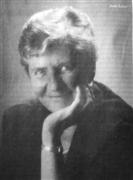
JOAN LOWE began working as a recording engineer in the mid 1960s, then moved on to production. Joan was production consultant/recordist for Virgo Rising: The Once and Future Woman (1973) (one of the first albums produced, engineered and performed solely by women) and recording engineer for Cris Williamson’s The Changer and the Changed (1975).
It’s late on Saturday night. The Artery, in the backstreets of Melbourne’s inner city suburb of Fitzroy, exudes a friendly energy. And Australian singer/songwriter Judy Small has just finished her second concert of the weekend — performances that are destined for inclusion on her first live album.
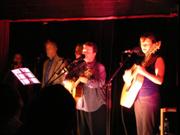
From the perspective of the audience, the concerts have gone smoothly and the subsequent appearance of a live CD seems a foregone conclusion.
It’s really difficult doing a live recording
But making a live CD isn’t necessarily easy, quick and cheap. According to audio engineer/producer Siiri Metsar, “It’s really difficult doing a live recording — there are so many variables!”. And according to Judy Small, “I’ve tried doing live recordings before, but they’ve never worked out.”.
With this in mind, Judy and Siiri (along with Kate Burke, Ruth Hazleton and Joan Lowe) provide insider accounts of what actually goes into the making of a live CD.
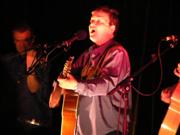
[JUDY SMALL] — “I’ve always seen myself as a live performer rather than a recording artist and I’ve never been fully happy with my studio recordings. I like some better than others, but none compare to the best of my live gigs, so I wanted to see if I could capture the sound and the atmosphere of what I love doing best. I’m not singing so much these days — it’s amazing how much time a full-time job takes out of your week! So I thought I’d better do this before my voice gets old and so I don’t die wondering!”
[SIIRI METSAR] — “If all goes well, then in some ways a live album can be easy, quick and cheap, but there are other factors to be taken into consideration. Because you are recording an event that exists in time and generally cannot be repeated (or is impractical to repeat), there is a chance that mistakes and lack of control over the various factors will render the recording faulty, if not unusable.”
The early equipment required on-the-spot live mixing
[JOAN LOWE] — “Having begun my recording apprenticeship and active engineering in the mid 1960s, I’ve seen an incredible change in equipment, techniques and an opening of the industry to independent labels and self-produced recordings. My early work was principally acoustic recording. There were few electronically enhanced or designed instruments, usually guitars, including bass guitars early on. I used to carry my location equipment to late night jazz clubs to record live sessions just for the practice of choosing and setting up miking and recording. I started out with a single-track recorder, then a 2-track (also known as half-track), and onward. The early equipment required on-the-spot live mixing, of course, and was abominably heavy!”
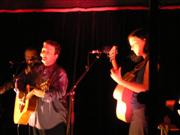
[JUDY SMALL] — “I wanted it to sound like a whole album rather than bits and pieces. I had tried to record live performances before a couple of times, but somehow I had always choked and just hadn’t been able to sing well enough — well enough for my liking anyway. So I wanted to record a live performance but I also wanted it to be a recording of me at my best. It never occurred to me to do it with a studio audience — it would have felt artificial really.”
[RUTH HAZLETON] — “Judy’s CD was the first time that I’d recorded a live album in front of an audience. And it was a challenge! As a performing artist, I found the atmosphere familiar and comfortable, though it was difficult in terms of having only one chance to get it right and do a good job, which is a bit scary.”
[SIIRI METSAR] — “With Judy’s album, the goal was to demonstrate the remarkable strength and diversity of her song writing throughout her career, and because the songs themselves tell the stories, the talking between songs was kept to a minimum. The stories we retained for the album were intended to give some background or an explanation to a song, or simply to inject a bit of humour or interaction with the audience!"
[JUDY SMALL] — "I knew that I wanted Kate to play with me — she’s just an amazing musician and she understands what folk music is all about. She’s not a pop musician doing a folk gig, she’s a folkie with a real gut understanding of the tradition — so I chose the dates partly because the venue was available but also to fit in with Kate’s touring schedule. Matthew Arnold was also available and I knew he’d add something really special to the sound, so it seemed to just fall into place. I chose Siiri to record and engineer the album because she has been my live sound engineer many times at festivals and concerts and I wanted her to co-produce it because she engineered and produced my CD, Let the Rainbow Shine. She gets my music — she knows how I want to sound.”
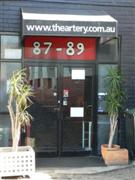
[JUDY SMALL] “I decided to do the recording fairly early in 2006 but I needed to find the time for rehearsals and also to save the money — these things don’t come cheap! I had seen Peggy Seeger at The Artery in about March of that year and fell in love with the venue — it’s very reminiscent of the Sydney folk clubs where I started my career: dark, small, intimate and friendly — and Zola Affley, who runs it, made me feel right at home. I started the real planning after an overseas trip in August 2006."
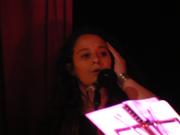
[RUTH HAZLETON] — “There is much smaller room for mistakes when recording live. Usually in the studio, you can record segments of each track separately and can re-record if a take isn't as good as it should be. Thus, there is much more pressure involved in recording a live concert. Your performance has to be as accurate as possible in the moment. When you perform live, the audience expects a solid performance, but there is much more room for error and spontaneity within that space. A live album is a record of one event, and you are aware that the person who owns a copy of the album will be listening to it repeatedly, out of a live performance context, which means that the performance has to be polished and of recordable standard. In all cases, but particularly with live recordings, the key is familiarity with the material, the other musicians and also lots of rehearsal!”
[KATE BURKE] — “Preparing for a live concert recording and preparing for a studio recording both need a lot of preparation. The best folk studio albums are recorded mostly live, but there’s always the opportunity to play a song again or overdub a mistake. No such chance with a live album! I learned around thirty of Judy’s songs beforehand so that we’d have a selection to choose from, and on the night the main challenge was to play well and with good energy. Judy’s songwriting is wonderful so learning the material didn’t feel like hard work, but we gave it a good running over many times beforehand.”
[RUTH HAZLETON] — “In many ways it is easier being a support vocalist, as you don’t have the added pressure of making artistic decisions and the pressure that goes along with it being your own project. That said, when you are working for someone else, you are anxious to do a good job and make sure your performance is both accurate and complementary to the main artist.”
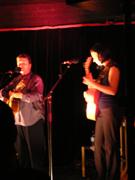
[KATE BURKE] — “Preparing for a session as a support musician/vocalist wakes me up from my usual laziness! If I’m playing my own material or playing in my duo with Ruth or playing guitar with Trouble in the Kitchen, it can feel so much like home that I do less preparation than I should. As a support muso, I feel a good kind of pressure, and an absolute need to know exactly what I’m doing so that I don’t stomp all over the song playing dischords and atonal nonsense.”
[JUDY SMALL] — “I don’t know that I had any great ‘vision’ for the gigs or the CD — I just wanted it to be an authentic snapshot of what I do best with a few friends thrown in. I didn’t really make any adjustments to things between the two gigs. The first night went so well from my viewpoint that I didn't feel the need to change it. If there were differences between the two nights, it wasn’t deliberate on my part. Of course the audiences were mostly different people so there were some differences in the feel of the gigs.”
[SIIRI METSAR] — “After a live concert is recorded, there are three further steps involved before it becomes an album. The first step is listening to the material and deciding which songs to include and which ones to leave out…The next step of the process is mixing the tracks in the studio…The final step is mastering, which involves putting all the individual songs in order (if they aren’t already in order), smoothing out the gaps or the applause between tracks, including any cross-fades or segues, and making sure that the overall levels of each individual song are consistent across the album.”
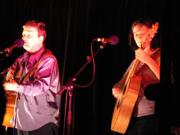
[JUDY SMALL] — “I heard the raw recordings in the car on my way to Sydney for Christmas and I couldn’t believe how good they sounded. I knew then that the CD would be exactly what I had wanted it to be!”
SUE BARRETT is an Australian music writer, with a special interest in women in music. She was in the audience on 1 and 2 December 2006 when Judy Small: Live at The Artery was recorded.
One of Sue’s earlier articles, ‘Revelation in the Studio: Women Producers and Engineers’ (featuring Jen Anderson, Tret Fure, Leslie Ann Jones, Karen Kane, Joan Lowe, Siiri Metsar, Susan Rogers and Darleen Wilson), can be found here.
© 2008
